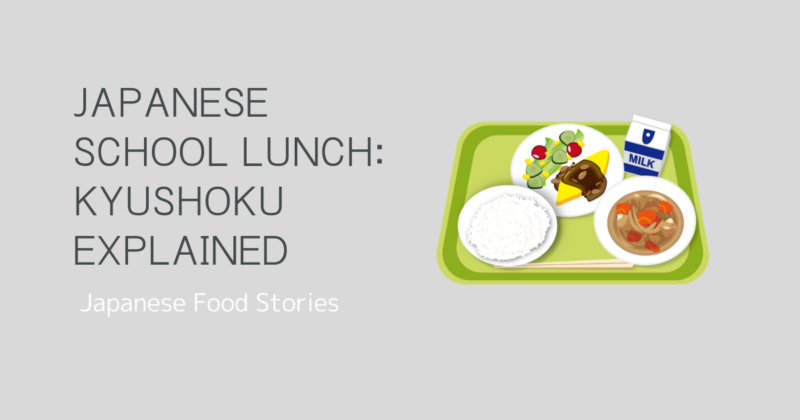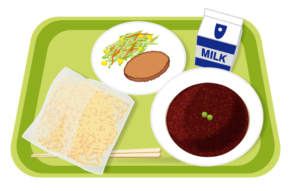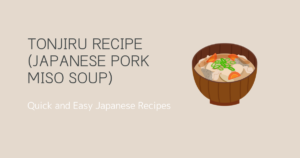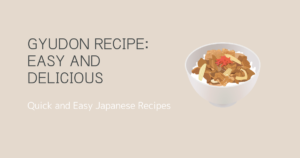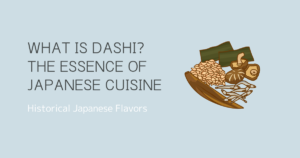Japanese school lunch, known as kyushoku (給食), is more than just a meal—it is a structured part of school life that emphasizes nutrition, community, and food education. Unlike the cafeteria-style lunches in many countries, kyushoku is served in classrooms, with students taking turns distributing meals to their classmates.
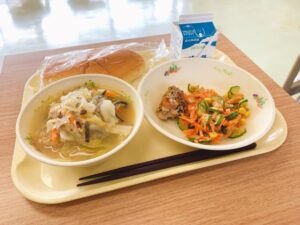
These lunches are carefully planned by nutritionists, ensuring a balanced diet with a variety of ingredients. Many Japanese children look forward to their school lunch, and some dishes have become iconic, recognized as unique to the Japanese school experience.
This article explores the history of kyushoku, the top five most beloved school lunch dishes, and how you can experience Japanese school lunch culture, even outside of Japan.
1. The History of Japanese School Lunch (Kyushoku)
The Beginning: Meiji Era (Late 19th Century)
- Japanese school lunches began in 1889 in Tsuruoka, Yamagata Prefecture, at a private school.
- The first meals were provided to students from impoverished families who could not afford lunch.
- First school lunch menu: Rice balls (onigiri), grilled fish, and pickles.
Post-War Period: Introduction of a Nationwide System
After World War II, Japan faced severe food shortages. In 1946, the United States provided aid in the form of food supplies, which led to the expansion of school lunches nationwide.
- 1947: The Japanese government officially introduced the school lunch program in elementary schools.
- Main post-war school lunch menu: Bread (koppepan), powdered milk (dasshifunyu), and stew.
The Expansion of Kyushoku: 1960s – Present
- 1960s: Introduction of rice-based meals, replacing the previous bread-heavy menu.
- 1970s – 1990s: Schools started incorporating regional specialties and seasonal ingredients to promote food education.
- 2000s – Present: Increased focus on local ingredients (chisan-chisho), allergy-friendly meals, and diverse menu options, including halal-friendly dishes in some areas.
2. Top 5 Most Popular Japanese School Lunch (Kyushoku) Dishes
1. Japanese Curry Rice (Kare Raisu)
- A mild, slightly sweet curry with a thick texture, served over rice.
- Different from Indian or Thai curry, it has a distinct Japanese flavor and is a favorite among students.
- Often eaten with a special utensil: the “spork” (sakiware spoon), a spoon with a forked tip used in school lunches.
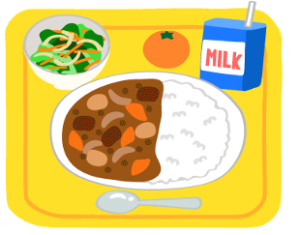
2. Agepan (Fried Bread)
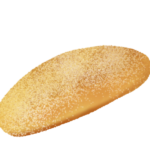
- A deep-fried, sugar-coated bread roll that originated in post-war Japan.
- One of the most nostalgic kyushoku items, still popular today.
- Variations include kinako (roasted soybean flour) and cocoa powder coatings.
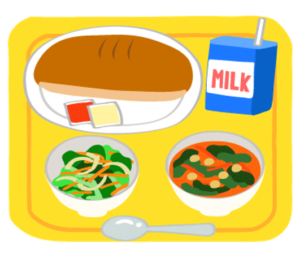
3.with Meat Sauce (Soft Men with Meat Sauce)
- A unique dish featuring thick wheat noodles and a tangy meat sauce, inspired by spaghetti bolognese.
- Students mix the sauce themselves, making it a fun, interactive meal.
- Spork-friendly meal, commonly eaten using the special kyushoku utensil.

Japanese School Lunch: Kyushoku(Soft Noodles)
4. Wakame Rice (Seaweed Rice)
- Rice mixed with seasoned wakame seaweed, offering a light but flavorful side dish.
- Sometimes enhanced with small fish or sesame seeds for extra nutrition.
- Often paired with miso soup or grilled fish.
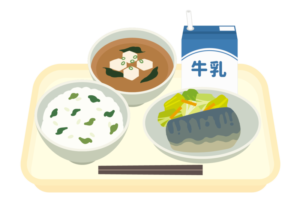
5. Fruit Punch (Furuutsu Ponchi)
- A colorful dessert made with various fruits in syrup, sometimes topped with soda for a fizzy effect.
- Popular as a refreshing, sweet end to a well-balanced kyushoku meal.

3. How to Experience Japanese School Lunch (Kyushoku) at Home
Recreating the Japanese school lunch experience can be both nostalgic and fun. Here are some ways to do it:
Step 1: Use a Japanese School Lunch Tray
- Traditional kyushoku trays have compartments for rice, soup, and side dishes, keeping the meal neatly separated.
- Available in stainless steel or plastic versions, just like in Japanese schools.
Step 2: Eat with a Japanese Spork (Sakiware Spoon)
- This unique spoon-fork hybrid is commonly used in Japanese schools, perfect for curry and noodles.
- It makes the kyushoku experience feel more authentic.

Step 3: Try Japanese School Lunch Foods
➡️ Buy Japanese Curry Retort Pack on Amazon
- Japanese curry, wakame rice mix, and agepan mix can all be purchased online.
- These allow you to recreate popular school lunch flavors without extensive preparation.
4. Conclusion: Japanese School Lunch as a Cultural Experience
Kyushoku is not just about food—it reflects Japan’s approach to nutrition, food education, and communal dining.
- Meals are balanced, carefully planned, and emphasize local ingredients.
- The top dishes, like curry rice, agepan, and soft noodles, remain student favorites year after year.
- Recreating a Japanese school lunch at home is easy with the right tools, like kyushoku trays, sporks, and traditional food items.
Would you like to try a Japanese school lunch yourself? It’s a great way to experience Japan’s food culture firsthand!
